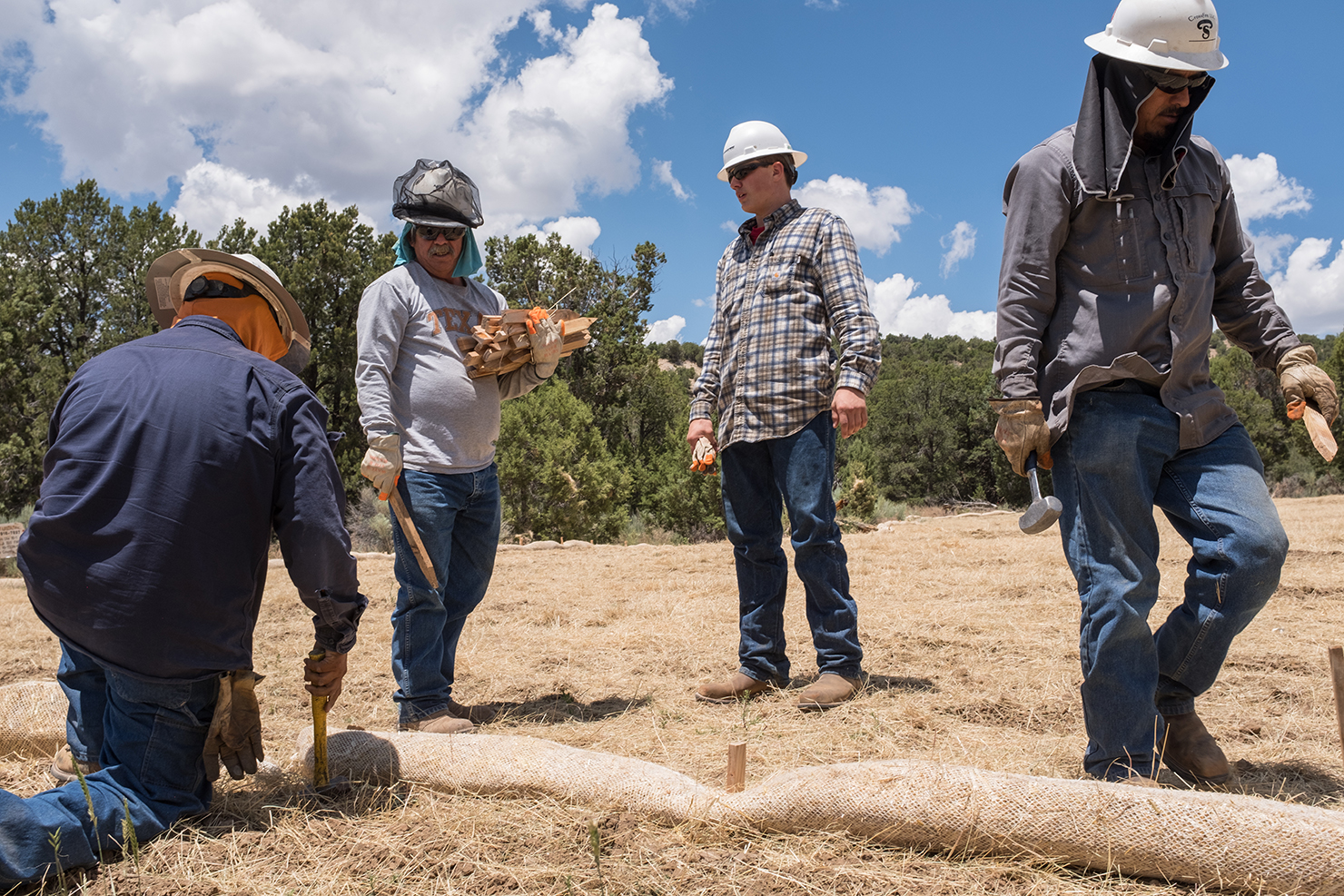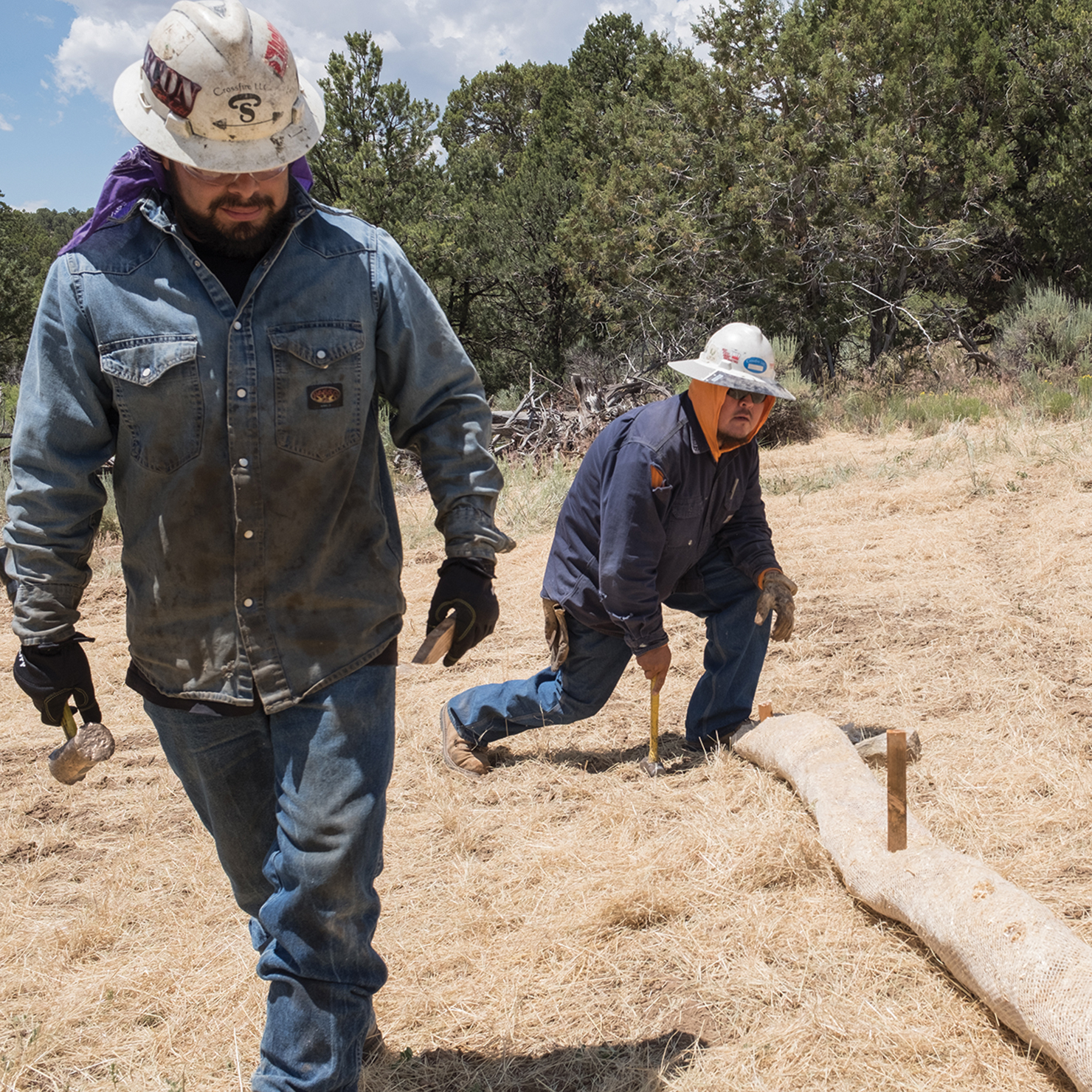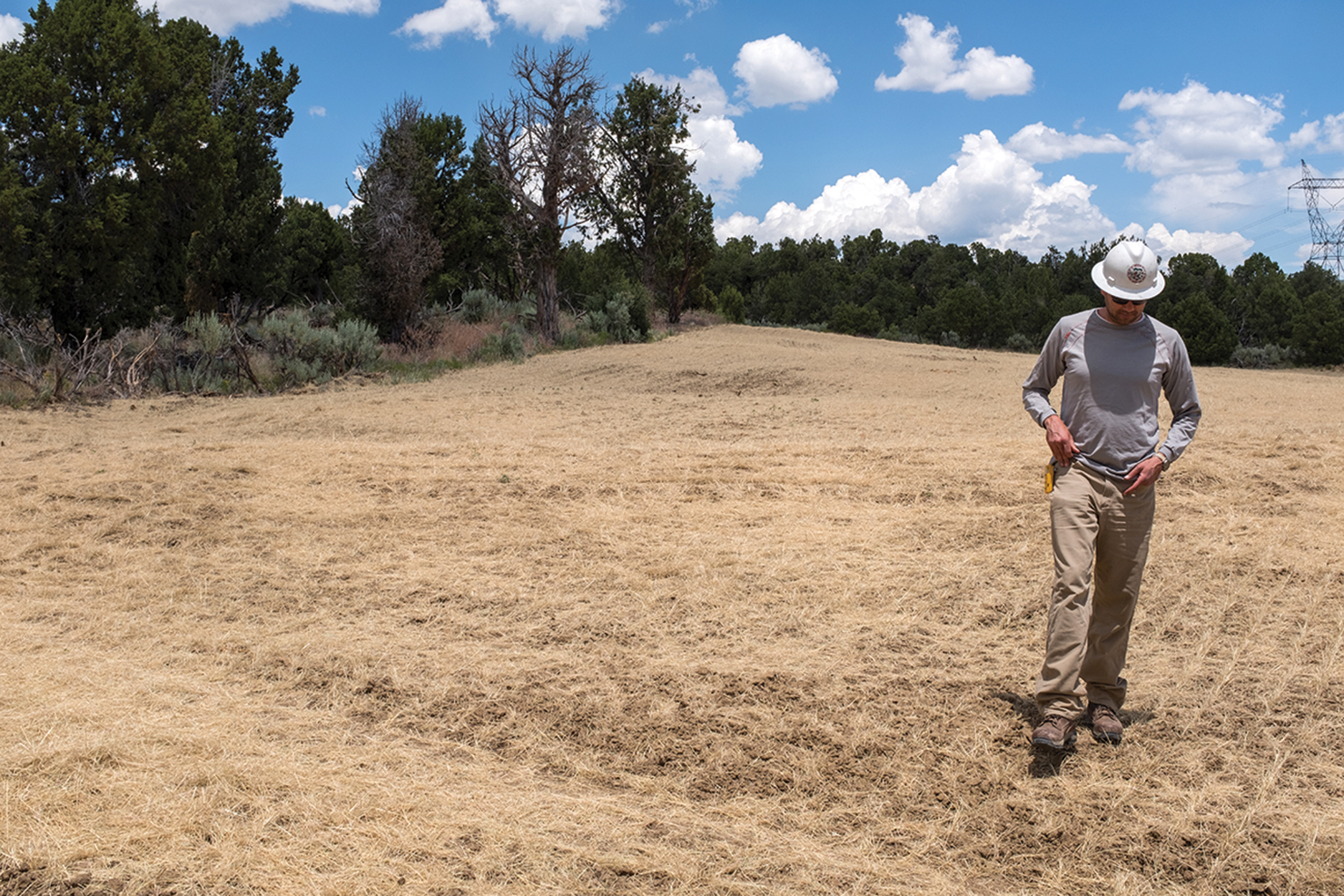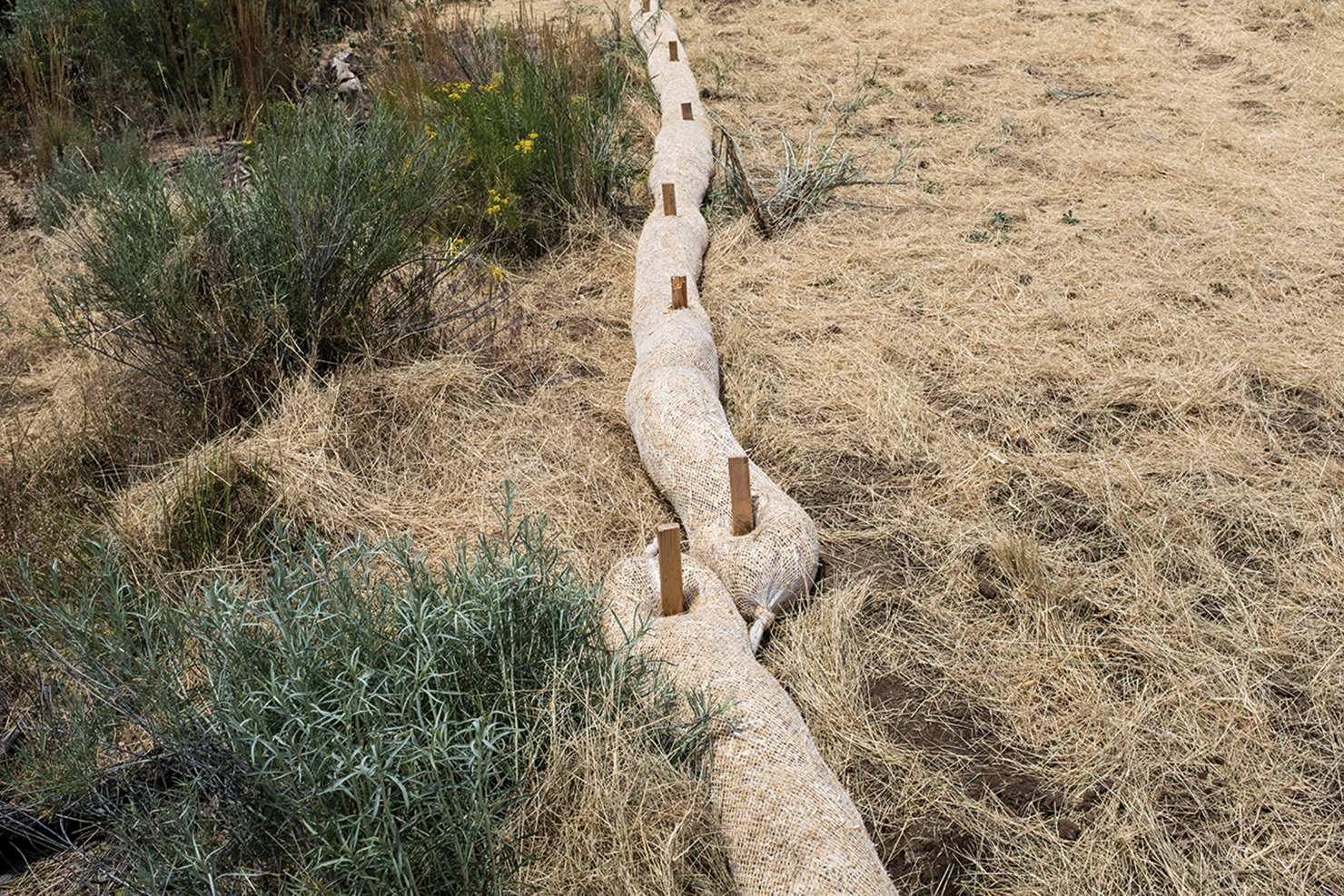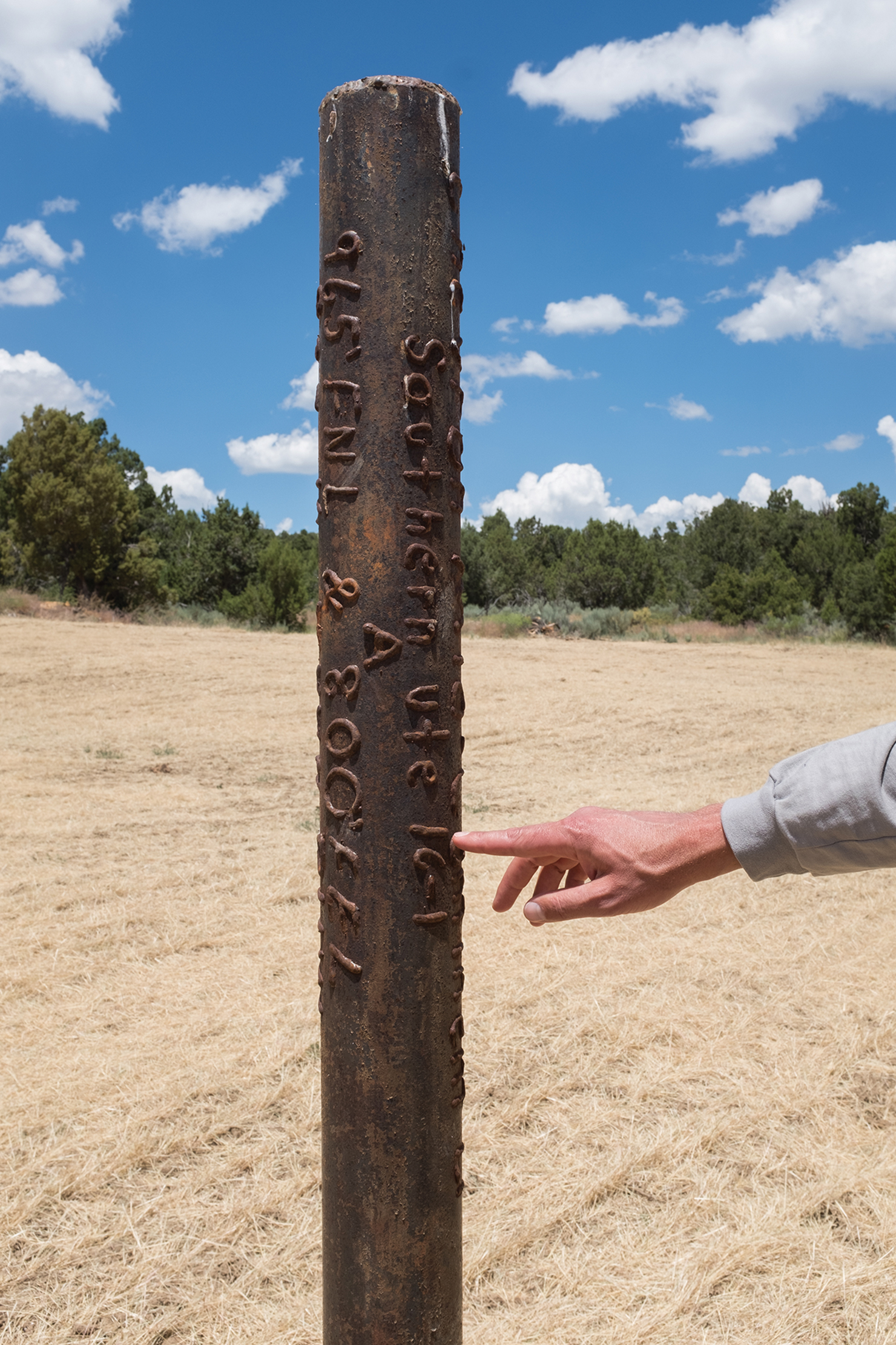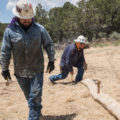As natural gas production becomes less economical on certain portions of the Southern Ute Indian Reservation, energy operators are entering the reclamation phase of operations, often referred to as plug and abandonment.
“What we will see over the next decade is abandonment from west to east. Over time, most of these [wells] will be depleted,” said Mike Matheson, Energy Manager for the Southern Ute Department of Energy. He explained that there are roughly 1600 gas wells on the surface, within reservation boundaries, and the far west side is the current focus of the plug and reclamation efforts. “We are setting up systems and processes to make sure we manage that activity, a reverse process from 30 years ago. [In order to] meet the Tribal Council and membership’s expectations.”
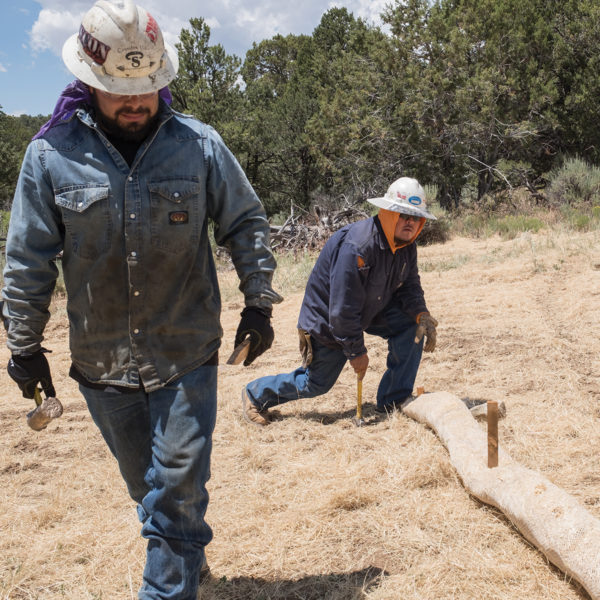
The Southern Ute Indian Tribe’s Department of Energy (SUIT DOE), Department of Natural Resources (DNR), Bureau of Land Management (BLM) and Bureau of Indian Affairs (BIA) have worked to make sure all facilities that are no longer integral to the development of energy resources are properly reclaimed to their natural state, explained Doug Krueger, Senior Environmental Compliance Specialist with the Southern Ute Indian Tribe’s Department of Energy.
“Our goal is that when we release the operator of their responsibility, that the site is stable and vegetated; they are on the hook until we are happy, until the criteria is met,” Matheson stated.
SUIT DOE has implemented an inspection program to track compliance issues and spills on energy development sites. These inspections help operators stay in compliance with the permit that was issued to them and makes sure energy sites are in good clean working order. Sites that are in clean working order are simply easier to reclaim once the oil and gas extraction is no longer economically viable. With the reclamation of well sites, compressor stations and pipeline corridors — come permanent and temporary road closures.
In 2016 Chevron plugged 25 wells on the west side of the reservation. This type of aggressive plugging program has been unprecedented on the reservation, Krueger explained. This large-scale reclamation project brought the Tribe, BIA and BLM together to discuss what should be done with the roads that were constructed and or improved to allow for energy development.
After consulting with the BIA, SUIT DNR, BLM, the Tribal Wildlife advisory board and tribal livestock grazers, the “Southern Ute Indian Reservation Oil and Gas Road Designations for Reclamation” was created and passed by Tribal Council Resolution 2017-134. A three-tier road reclamation standard was adopted for the area directly affected by the Chevron reclamation plan. This tiering system will be expanded to other parts of the reservation when necessary.
The primary goals are to restore vegetation and prevent erosion. “Bring the grasses back to the same density as surrounding area, no weeds. Then, 50 years from now, one would have a truly hard time seeing a difference; once trees and shrubs come back, only our plugging stake will be visible,” assured Matheson.
“[What we often] lose sight of, is that gas & oil production is temporary, so it’s paramount that the recontouring work is done correctly,” Krueger emphasized. The landscape needs to go back to, or as close to, its original state as possible — we are returning these areas to a roadless state, he explained, which in turn greatly benefits the wildlife corridors.
Short Tier 3 roads are generally reclaimed with the well pad. However, there are many Tier 3 roads that need to be left open to allow the production company access to conduct follow up work such as erosion control or noxious and invasive weed management. Once the well site has met the reclamation criteria, the road will be fully reclaimed. Most Tier 2 roads will be open to the membership after reclamation has been achieved. But the road will be restored in a manner that is suitable to foot, horse and ATV use. Full size vehicles will typically not be allowed. Tier 1 and special use roads will not be reclaimed. This Tiering system is driven by the fact that once the energy development moves out, there will be no one to maintain the roads. This tiering system reduces the maintenance cost of approximately 40 miles of Tier 3 roads and 28 miles of Tier 2 roads in the Valencia and 44 Canyon area that the Tribe would be responsible for maintaining if left open.
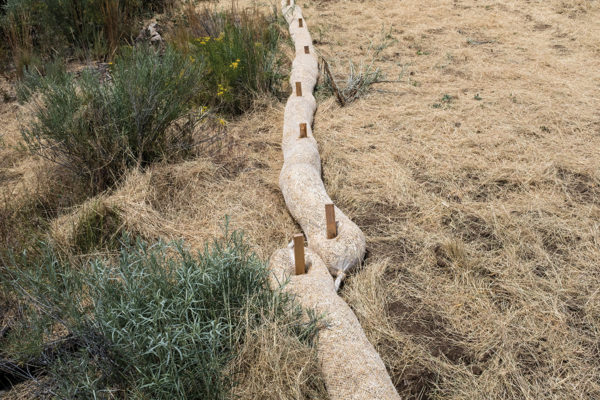 The order of well site reclamation, from start to finish, begins with operators making sure the well bore is cemented, or plugged, and equipment and pipe is stripped from the location. Then soil sampling under and around production equipment is conducted and all impacted soil is removed from the well site and properly disposed of. From there the site can be recontoured — moving the material from the fill slope into the cut and restoring the natural topography as best as possible. The recontouring work is then inspected by the Tribe and federal agencies, then the disturbed area is seeded and mulched.
The order of well site reclamation, from start to finish, begins with operators making sure the well bore is cemented, or plugged, and equipment and pipe is stripped from the location. Then soil sampling under and around production equipment is conducted and all impacted soil is removed from the well site and properly disposed of. From there the site can be recontoured — moving the material from the fill slope into the cut and restoring the natural topography as best as possible. The recontouring work is then inspected by the Tribe and federal agencies, then the disturbed area is seeded and mulched.
Chevron has currently plugged, sampled and recontoured all of the 25 wells and is in the process of seeding and mulching the reclaimed areas. Reclaimed areas will be a common sight on the west side of the Reservation. Tier 2 and 3 roads will be closed to all vehicle traffic for approximately 3 to 5 years.
“They [the operators] are all doing a good job. What we need is cooperation from the public, by respecting the site and the work that is being done,” Matheson emphasized.
The DOE is requesting all reclaimed areas be accessed by foot or horse only in order to allow for germination of desirable vegetation. Once the reclaimed area is stable and has the appropriate amount of vegetation the operators will be released of their responsibility and the areas will be opened back up to the membership, where access will return to normal tribal land management practices.
INFO BOX:
Tier 1– Recommend to remain open. Heavy year-round usage. Main thoroughfares that can include major canyon, access, and/or County Roads. Heavy seasonal usage by tribal members for hunting.
Tier 2– Recommend site specific reclamation. Medium year-round usage. Secondary thoroughfares or longer well spur roads. Medium to light seasonal usage for hunting by tribal members.
Tier 3– Recommend to close and reclaim. Light year-round usage. Dead end roads and short well spur roads. Limited traffic and little to no use by tribal member hunters.
Special Use– Roads associated with the Southern Ute Department of Energy (SUDOE) Picket Fence Mitigation Vent Well Project and/or Coal fires. The SUDOE will continue to use these roads to monitor ongoing project areas.

